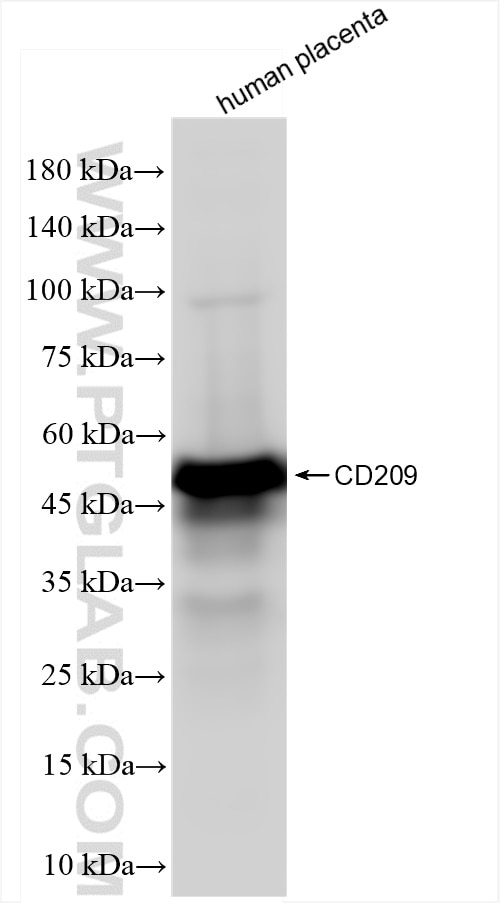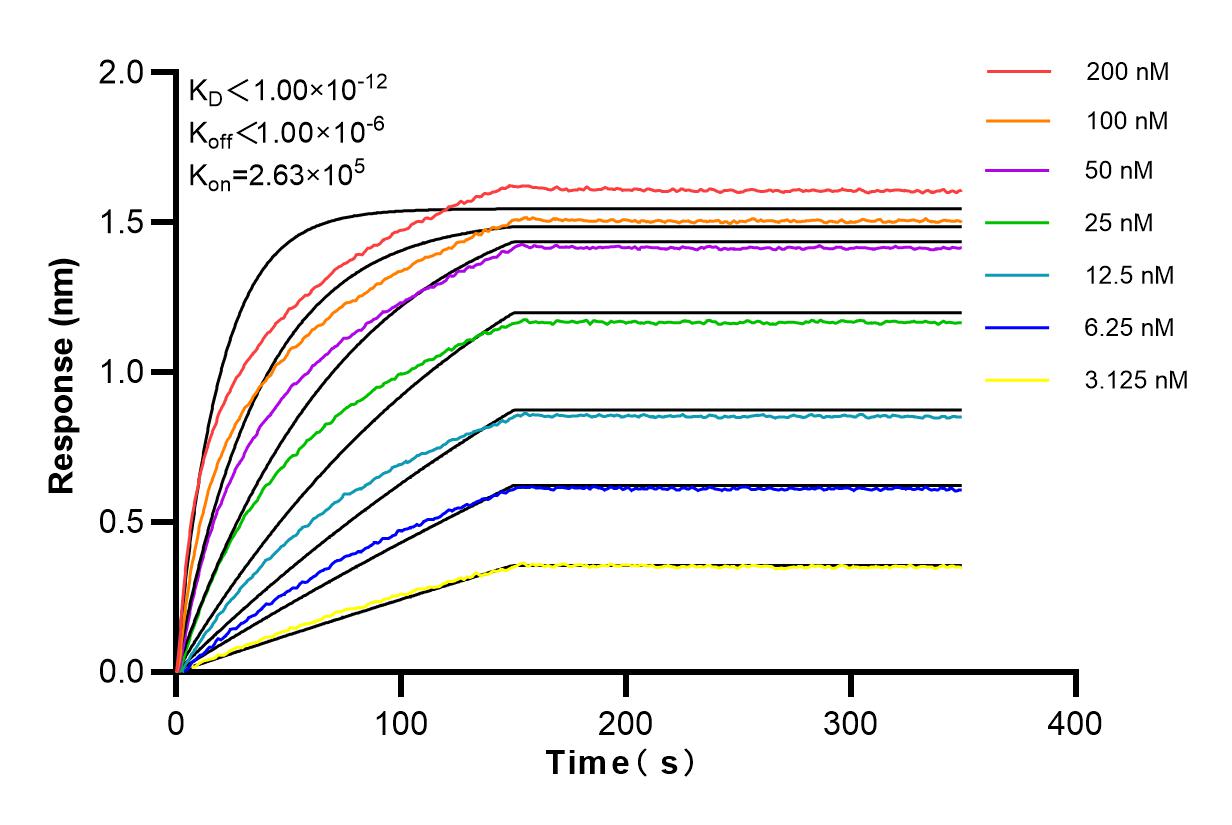Anticorps Recombinant de lapin anti-CD209
CD209 Recombinant Antibody for WB, ELISA
Hôte / Isotype
Lapin / IgG
Réactivité testée
Humain
Applications
WB, ELISA
Conjugaison
Non conjugué
CloneNo.
240907A2
N° de cat : 84095-6-RR
Synonymes
Galerie de données de validation
Applications testées
| Résultats positifs en WB | tissu placentaire humain, |
Dilution recommandée
| Application | Dilution |
|---|---|
| Western Blot (WB) | WB : 1:2000-1:10000 |
| It is recommended that this reagent should be titrated in each testing system to obtain optimal results. | |
| Sample-dependent, check data in validation data gallery | |
Informations sur le produit
84095-6-RR cible CD209 dans les applications de WB, ELISA et montre une réactivité avec des échantillons Humain
| Réactivité | Humain |
| Hôte / Isotype | Lapin / IgG |
| Clonalité | Recombinant |
| Type | Anticorps |
| Immunogène | Protéine recombinante |
| Nom complet | CD209 molecule |
| Masse moléculaire calculée | 404 aa, 45.7 kDa |
| Poids moléculaire observé | 48 kDa |
| Numéro d’acquisition GenBank | BC110615 |
| Symbole du gène | CD209 |
| Identification du gène (NCBI) | 30835 |
| Conjugaison | Non conjugué |
| Forme | Liquide |
| Méthode de purification | Protein A purfication |
| Tampon de stockage | PBS with 0.02% sodium azide and 50% glycerol |
| Conditions de stockage | Stocker à -20°C. Stable pendant un an après l'expédition. L'aliquotage n'est pas nécessaire pour le stockage à -20oC Les 20ul contiennent 0,1% de BSA. |
Informations générales
CD209 (DC-SIGN, CLEC4L) is a C-type lectin receptor that is involved in the innate immune system and recognizes numerous evolutionarily divergent pathogens, including bacteria, viruses, and parasites. CD209 is preferentially expressed on dendritic cells (DCs). It mediates transient adhesion of DCs with T cells. It has been reported that CD209 plays a role in capture and transmission of HIV from DC to T cells (PMID: 10721995).
Protocole
| Product Specific Protocols | |
|---|---|
| WB protocol for CD209 antibody 84095-6-RR | Download protocol |
| Standard Protocols | |
|---|---|
| Click here to view our Standard Protocols |




